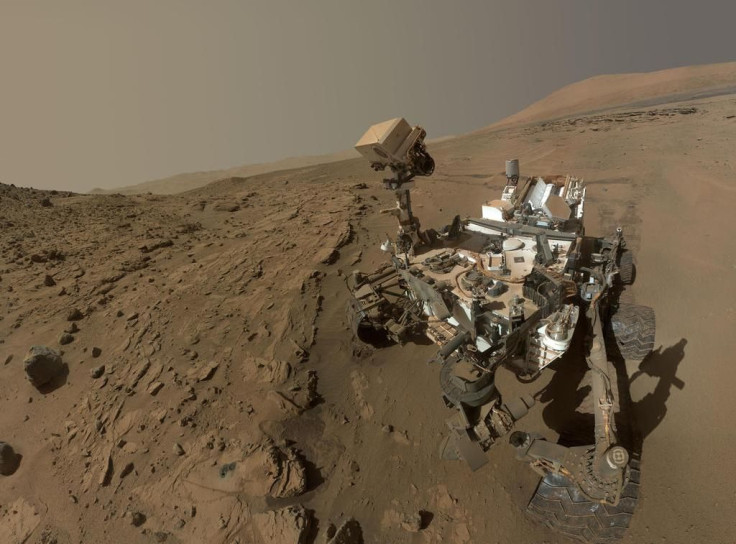NASA Mars Alien Surprise: Another 'Biosignature' Discovered On Mars

A couple of months ago, NASA’s Curiosity rover was able to record a sudden spike in methane gas on Planet Mars, making scientists back on Earth quite excited.
Based on a report, Curiosity was able to detect one of the highest levels of methane gas in the Martian atmosphere since 2013 at 21 parts per billion. Methane gas plays an important role in the search for life on Planet Mars since it is associated with organic microbes found underground in our home planet.
The excitement was short-lived, however, because as quickly as it appeared the methane gas also disappeared just as fast. “A plume came and a plume went,” Paul Mahaffy, from NASA’s Goddard Space Flight Center, said during a presentation in Washington.
“The methane mystery continues. We’re more motivated than ever to keep measuring and put our brains together to figure out how methane behaves in the Martian atmosphere,” Ashwin Vasavada said in a statement from NASA’s Jet Propulsion Laboratory (JPL), which handles Curiosity.
Now another mystery arises as a new biosignature has once more been detected on the Red Planet, prompting another round of queries on whether or not there’s real life on Mars.
According to a Space.com, gas is “behaving strangely” in Mars' atmosphere. A new study shows that the NASA Curiosity is detecting something that’s similar to oxygen which indicates that there really might be some type of alien form lurking somewhere on the planet.
"We're beginning to see this tantalizing correlation between methane and oxygen for a good part of the Mars year. I think there's something to it. I just don't have the answers yet. Nobody does," study co-author Sushil Atreya, professor of climate and space sciences at the University of Michigan in Ann Arbor, said in a press release.
The new data comes from Curiosity's Sample Analysis at Mars (SAM) instrument, also known as the mobile chemistry lab that the rover carries. SAM is being used not only to study dirt samples from Mars but also its atmosphere.
The new study was published online in the Journal of Geophysical Research: Planets, and it pretty much tackles all the information gathered by SAM on Mars’ atmospheric measurements from 2012 to 2017. Based on the study, the NASA team believes that the oxygen levels do not follow the usual seasonal patterns as the other gases. In retrospect, the O2 levels increase during Martian spring and summer and go down during the Gale Crater’s winter.
"We're struggling to explain this. The fact that oxygen behavior isn't perfectly repeatable every season makes us think that it's not an issue that has to do with atmospheric dynamics. It has to be some chemical source and sink that we can't yet account for," study leader Melissa Trainer from NASA's Goddard Space Flight Center, also said.
© Copyright IBTimes 2025. All rights reserved.





















